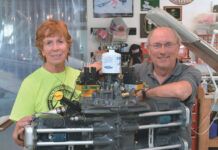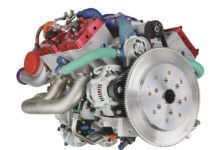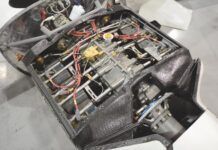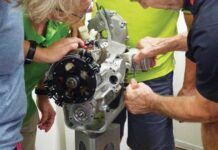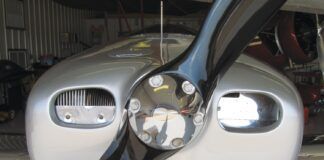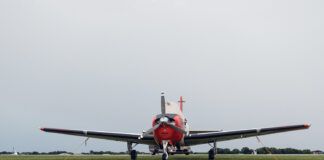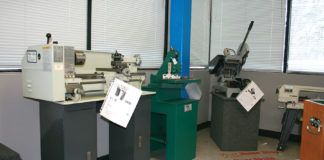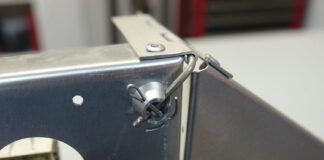KITPLANES Magazine, August 2001
Auto Engines for Aircraft, Part 1
Part 1 of an engineering perspective on these popular conversions.
By Terry Edwards
Many builders of homebuilt aircraft look at the cost of certified aircraft engines and believe they can save money by using a converted automobile engine. There have been many successful installations of such engines, but the builder must be aware of the engineering aspects of engine characteristics and systems.
The history of engineering is full of examples of experimenters confounding the theorists and vice versa, but in general, successful engineering depends on a combination of knowledge, analysis, experimentation and test.
A lack of knowledge and analysis means more experimentation and test. In aircraft powerplant design, this can lead to forced landings or worse. This two-part article will try to impart some basic engineering knowledge and analysis for those who wish to experiment with converted automobile engines.
An engine’s end use determines its characteristics. Over the last century, the internal combustion aircraft and automobile gasoline engines have evolved to have the characteristics found in Table 1.
|
Table 1. Engine Characteristics. |
The obvious differences between these two types of engines are weight and first cost. These characteristics drive the design features and compromises. To compare these in more detail, we need some definitions:
Maximum Rated Power: The highest power that the engine is allowed to develop for short periods of operation.
Normal Rated Power: The highest power that an engine is allowed to develop in continuous operation.
The rate at which the engine does work. Units are horsepower (33,000 foot-pounds per minute). This is normally measured on a dynamometer or brake, resulting in the term brake horsepower.
Torque: The ability of an engine to do work. It is a product of the rotational force produced by the crankshaft and a moment arm. Units are pound-feet.
TBO: Time between overhaul. Provided the engine is operated and maintained per the manufacturer’s recommendations, TBO is the expected life of the engine measured in hours.
The difference between maximum rated power and normal rated power is extremely important to this discussion as it directly affects reliability and TBO.
Automobile engine power is quoted as maximum rated power. The typical road-load power (rolling resistance plus aerodynamic drag) required of an automobile engine is only about 20 hp at highway speeds.
The maximum rated power gives an indication of the ultimate performance of the vehicle. However, when automobile manufacturers offer the same engines as industrial engines, they are rated at normal rated power. Contrasting this, in an aircraft, we expect TBO of 1500-2000 hours in an engine that delivers 55%-100% of rated power, averaging about 75% of rated power. To illustrate the point, consider the ratings of the same V8 engine shown in Table 2.
|
Table 2. V-8 engine ratings depending on application. |
Note that the automobile sports engine power rating is 75% higher than the industrial version. It is interesting that the aircraft conversion lists two power ratings. As this engine is sold without a reduction drive, it falls on the builder to choose which rating is most appropriate. However, the aircraft conversion is still rated much higher than the engine manufacturer’s industrial version.
Consider that the industrial version power curves show increasing power and torque at engine speeds greater than shown in the table, but the engine is not rated at the higher speeds. That is because operating at these higher speeds would reduce engine TBO.
While an engine’s power rating is the most widely used rating, it is an engine’s ability to do work – its torque rating – that is most important. Torque (T), power (P) and engine rotational speed (N) are related by:
T (lb.-ft.) = P(hp) x 5252/N(rev./min.)
If we choose the aircraft conversion figures as an example:
T=275 x 5252/3500=412 lb.-ft.
Interestingly, if we check the torque at the maximum power rating we find:
T=350 x 5252/4800=383 lb.-ft.
which is 7% less than the peak torque rating. This is typical of all piston engines.
Propellers
The function of the propeller is to convert the engine power into thrust. The power absorbed by the propeller is given by:
P =& (sigma(rpm/1000)3 x D5 x Cp)/50
and the thrust is given by:
Th = (sigma(rpm/1000)2 x D4 x Cth)/1.515
where:
sigma = relative air density
D = propeller diameter (ft.)
Cp = propeller coefficient of power
Cth = propeller coefficient of thrust
Propeller design and the power and thrust coefficients are beyond the scope of this article. But note that the power absorbed increases as the cube of the rpm and the fifth power of the diameter. If we plot a typical engine power curve against a propeller demand curve, we see the information in Chart 1.
| Engine power available vs. propeller power required. | |
To minimize the tip losses and noise, the propeller blade tip speed should be less than the local sonic velocity.
SV = sonic velocity
SVsea level = 1116.5 ft./sec. x 60= 66,990 ft./min.
SV10,000 ft. = 1077.4 ft./sec. x 60 = 64,644 ft./min.
A typical 75-inch (6.25-foot) propeller should be limited to about 0.85 Mach or, at sea level:
rpm=0.85M x SVsea level/D = 0.85 x 66,990 ft./min./( x 6.25ft=2900 rpm.)
Thus the thrust required by the aircraft determines the propeller diameter (D4 in the thrust equation) and the sonic velocity determines the maximum rpm. Therefore, if our engine is rated at a higher rpm than the optimum propeller speed, we need a propeller speed reduction unit (PSRU). This fact is rather obvious, but the engine rated speed and the optimum propeller speed determine the actual ratio.
Provided the correct power and torque ratings are observed, any core automobile engine should provide reliable service. Core in this case means the basic block, crank, rods, pistons, heads and valve train. The difference between a reliable and unreliable installation is in the systems engineering, which means all of the support systems, PSRU, fuel, oil, cooling and controls that the engine needs.
The engineering in these support systems can be considerable. All systems should be examined to determine if a single-point failure can cause engine failure.
PSRU types include gear, toothed belt and chain drive. A gear drive is the most reliable and the most costly. Gears are precision-machined components whose contact surfaces have been hardened. Gears are manufactured in sets and can be manufactured to a variety of accuracy standards. The American Gear Manufacturers Association (AGMA) lists these standards in their publications.
AGMA Class 6 to 8 are used in automobiles, and this is the minimum class that should be used on a PSRU. Spur gears are more efficient because they have no sliding friction and no end thrust. Helical gears are quieter due to the sliding action of the teeth, but they are slightly less efficient and require the bearings to absorb the end thrust.
Toothed-belt manufacturers do not endorse PSRU applications, so users are on their own establishing application factors and service life. Although they are light, relatively inexpensive and quiet, the reinforcing fibers have a finite life, and the molded teeth need to be inspected on a regular basis for wear. Many housings have open sides to facilitate inspection, but consideration should be given to enclosing them to prevent debris from damaging the teeth or breaking the belt.
Chain drives may be either roller chain or Morse Hy-Vo chain. All chain drives require an enclosed housing and continuous oil lubrication. They are compact but require accurate alignment. As there are hundreds of parts in the links and pins, many more parts can fail compared to gears. Chains are prone to galling (tearing away of metal from load- bearing surfaces), tension failures and fatigue failures. In addition to the tension force required to transmit power, additional tension force is due to the centrifugal force caused by the rotational speed of the drive.
All PSRUs require bearings. Rolling-element bearings are preferred for both the thrust bearing for the propeller and the radial bearings for the input and output shafts. Once the loads are accurately known, bearing manufacturers’ handbooks provide excellent formulas to rate the life of the bearings. The L10 life is generally used, which means that for the load in question, 10% of a large sample of bearings will fail before reaching the calculated life (either hours or revolutions).
Failure means that the races will start to exhibit rough surfaces causing noisy operation. It does not mean that they fall apart. If left in service long enough, all bearings will fail due to fatigue failure of the rolling surfaces. The propeller shaft bearings should be sized to support the propeller thrust loads plus the gyroscopic loads caused by maneuvering.
As a minimum, the L10 life calculated should be at least 1.5-2 times the TBO of the engine: 3500-5000 hours. If sealed bearings are used, they may not reach this life if the hours per year are low because the grease sealed inside the bearings can dry out. Oil-lubricated bearings should reach the calculated life. Only one bearing on a shaft can be fixed axially; the other must float to allow for thermal expansion.
All PSRUs should isolate the side loads from the gears, chain or belt from the engine crankshaft bearings. Neither the crankshaft nor the crankshaft bearings was designed for side loads.
Keeping It Cool
No engine will function for long without adequate cooling. As the amount of heat rejected to the cooling system is approximately the same as the heat used to produce the shaft power of the engine, a properly sized radiator with good inlet and exit ducting is essential. The cooling system is a primary engine support system, along with the fuel and ignition systems.
Unfortunately, many radiator systems in homebuilt aircraft look like afterthoughts. A close examination of WW-II-era aircraft will give some guidance in how to integrate the cooling system into the airframe. The Spitfire, Hurricane and Bf109 used underwing radiators. The P-51 Mustang used an aft-fuselage-mounted radiator, while the P-40 Warhawk’s was mounted beneath the engine.
One of the most efficient was the Mosquito, whose radiators were buried in the wing between the fuselage and the engine nacelle. The theme of all of these was efficient inlet and exit ducting with few or no bends, with the radiator core perpendicular to the airflow direction. It is better to make a duct that increases the airframe frontal area but is well streamlined on the outside and inside, than to try mounting the radiator in the space between the engine and the firewall with several 90 bends in the duct. Sharp bends increase cooling drag.
The function of the inlet duct is to increase in area gradually so the air velocity slows to the most efficient heat-transfer speed. The function of the exit duct is exactly opposite: contracting gradually to increase air velocity. Because heat (energy) is added to the air in the middle of the duct, it is possible to obtain net thrust from the duct as exit energy is greater than inlet energy.
Radiator design is rather complicated because the heat rejection depends on the air and water temperatures and the air and water flow rates. Custom radiator shops use charts to determine radiator area and core thickness. Automobile radiators can be used, but it may not be possible to obtain performance charts from the manufacturer. Radiators must be mounted in vibration-isolating rubber mounts to the structure. Do not mount them to the engine.
All coolant pipe ends must be beaded and should be mounted to the structure with cushioned Adel clamps. Coolant pipes should be joined with short straight pieces or elbows and can be high quality automotive silicon hoses. Hose clamps should be constant-tension type, and two clamps per hose end provide extra safety.
In addition to a coolant temperature gauge, cockpit instrumentation should include a coolant pressure gauge, which will give the fastest indication of leakage. Make sure no coolant pipes or hoses enter the cockpit. If a separate radiator-type cabin heater is used, make sure this can be shut off completely in the event of a leak.
The system fill/pressure cap should be a coolant-recovery type, and the pressure rating should be the same as that provided by the manufacturer in the automobile application. Higher-pressure caps will raise the boiling point of the water, but may also cause head gasket or water pump seal leaks.
Keeping It Oily
Engine oil systems, the sump, pump, distribution galleries and bearings are generally adequate for the normal rated power. However, the pump drive system should be checked to see if there are any pins connecting the drive gears to the shafts. In some cases, these pins are designed to break if the pump encounters debris. All pins should be examined to determine if the shear feature provides a margin of safety or if it is a single-point failure that will disable the entire engine. Filters must be lockwired so they don’t unscrew.
Lubricating oil should be the type and grade recommended by the engine manufacturer. Note that the internal clearances in the journal bearings and cam drives are designed with the recommended grade in mind and that using a heavier grade may lead to increased wear. Also, different types of oils have various additive packages, which may affect the engine materials.
The valves should be those recommended by the manufacturer. Aftermarket valves made from titanium or stainless steel are made specifically for reduced valve inertia at high rotational speeds or for special fuels such as alcohol. They do not have the surface hardness and wear characteristics that the special valve and valve seat alloys used by the engine manufacturer have.
Next month we will continue with a discussion of ignition, balancing, and using the right fuel.
AUTHOR TERRY EDWARDS is a senior mechanical design engineer currently working on marine propulsion drives. He flies his own airplane and is working on the Canadian equivalent of an A&P mechanic’s rating.






